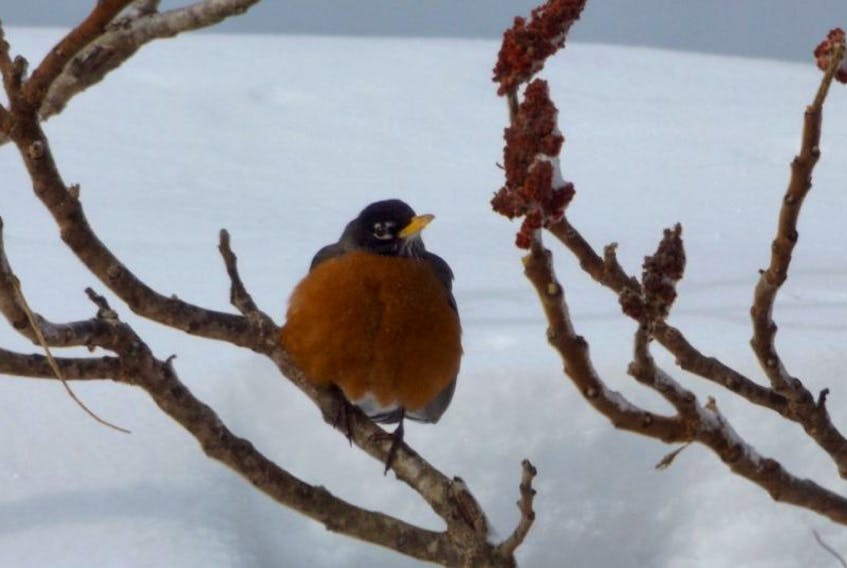However, most of the American robins being seen aren’t returning from warmer climates… they’ve been here all along.
However, most of the American robins being seen aren’t returning from warmer climates… they’ve been here all along.
Photographer and avid birder Bill Curry says that although robins migrate, not all fly south from here.
“They tend to be in the woods in the winter, so we don't notice them, but when the weather gets harsh, they come to feeders, so more folks see them,” he said.
He had a large flock at his home in Port Maitland a few days ago eating Canadian holly berries.
In mid-winter, many of the favourite berry food sources for birds were still sporting heavy loads of fruit, including English and Canadian holly, staghorn sumac, bayberry, rugosa roses and hawthorn.
“It was a bumper year for the berries,” said Curry.
He’s planted cotoneaster around his foundation to also attract birds. The low-growing groundcover has a mounding habit with white flowers in the spring and red berries in the autumn that persist into winter.
He says a favourite food for robins is apple slices. Another treat is raisins.

5 facts about robins
1. Robins are often the last bird to sing before sunset and have a beautiful song.
2. The difference between a male and female robin is the former has a brighter colour.
3. In the past, robins were killed for their meat. The Migratory Bird Act now protects the species.
4. In winter, the robin puffs up its plumage to insulate its body against cold winds.
5. Flocks of robins can be huge, sometimes up to a quarter-million birds during winter.
Click HERE to hear a robin's song.









